Wallpaper is one of the most affordable finishing options suitable for kitchens. A wide variety of textures and patterns allows you to find the perfect choice for any style. In this article, we will discuss what to consider before purchasing wallpaper and how to create a stunning interior using it.
Types of wallpaper, their pros and cons
Since the kitchen, along with the bathroom, is considered one of the most humid areas in a home, it’s best to choose wallpaper that is resistant to such a microclimate.
For example, inexpensive paper wallpaper can quickly lose its aesthetic appearance, and within a year or even sooner, the renovation will need to be redone. Periodic exposure to water vapor also negatively affects textiles – they can stretch, sag, fade, and become stained.
However, vinyl, non-woven, acrylic, bamboo, cork wallpapers, and fiberglass are excellent options for beautiful and durable wall coverings in the kitchen.
Vinyl kitchen wallpaper
The main drawback of polyvinyl, which is its inability to allow air and moisture to pass through, becomes a significant advantage in the kitchen. The only potential exception might be foam-layered wallpaper, where water can accumulate in the micropores. Meanwhile, vinyl coverings with a smooth surface or those that resemble mother-of-pearl embroidery with hot embossing (screen printing) can even withstand washing with a damp sponge and a neutral detergent.
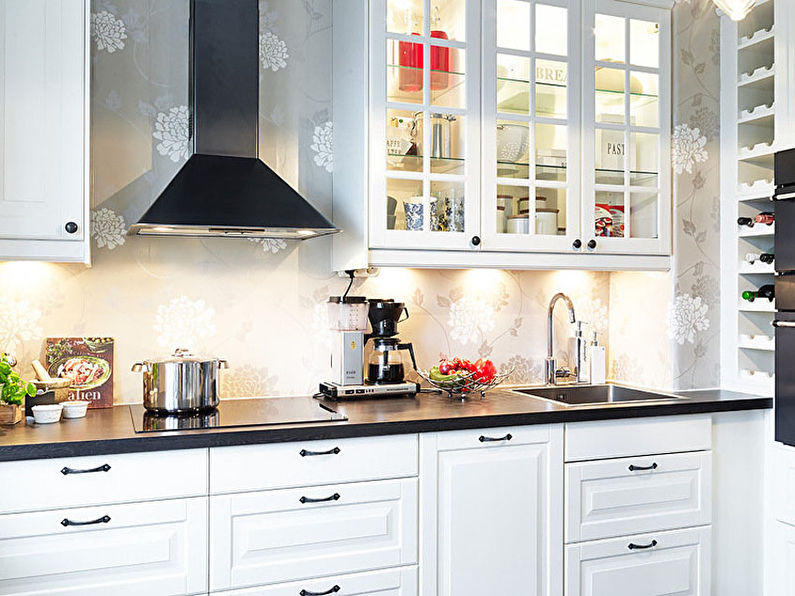

Non-woven wallpaper for the kitchen
Non-woven wallpaper is a flexible cellulose sheet. People usually use this type of wallpaper for painting, although colored options are also available. To enhance protection against moisture, consider using latex or acrylic paint. To preserve the embossed relief, avoid repainting this wallpaper more than 3-5 times throughout its lifespan. The advantage of non-woven wallpaper is its environmental friendliness, but the disadvantage is its ability to absorb moisture.

Acrylic wallpaper for the kitchen
This material bears a composition similar to vinyl. However, in this case, the surface substance adheres to a paper or non-woven base using a dot method, which leaves micro-pores for air. Acrylic wallpaper weighs about half as much as vinyl, making them easier to glue, but their moisture resistance and durability are not as good.

Bamboo wallpaper for the kitchen
Bamboo wood has the ability to repel water, and it also looks very beautiful. Natural wallpaper in warm straw colors will create a comfortable homey atmosphere in the kitchen. In addition to the high price, there are no disadvantages to this type of finish.

Cork wallpaper for the kitchen
Another environmentally friendly and original material for wall decoration in the kitchen is cork coating in rolls. Water resistance, durability, resistance to mechanical damage, ability to hide wall irregularities, unique texture – this is not the whole list of advantages of such wallpaper. By the way, denser cork textures are also suitable for floor decoration.
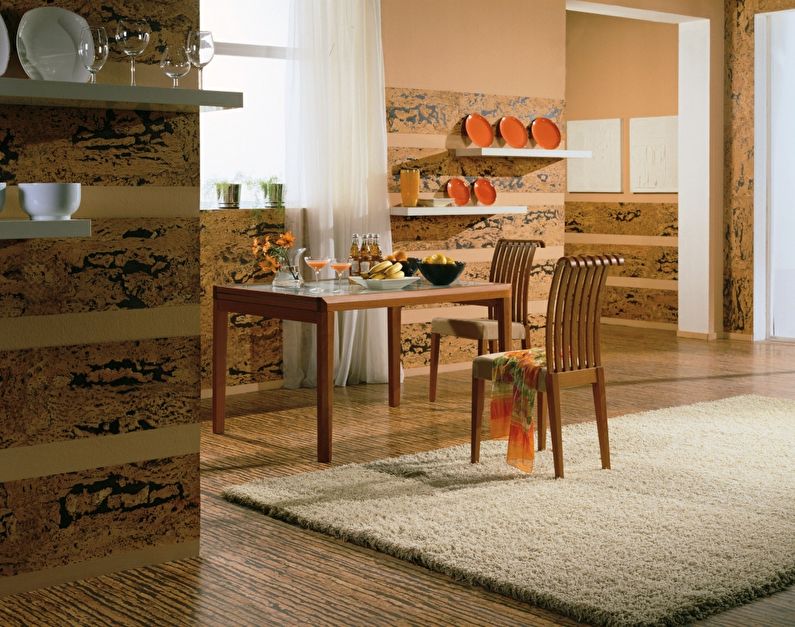

Glass fiber wallpaper for the kitchen
Flexible semi-transparent fabric made of glass fibers is an ideal option for those who value simplicity and reliability. Smooth or with a barely noticeable relief, glass fiber wallpaper will stick to the walls for at least 30 years, and during this time, they can be repainted up to 20 times. Made entirely of natural raw materials (quartz sand, soda, clay), they allow moisture and air to pass through, while not becoming wet, not absorbing odors, and not developing mold or stains.
A nice bonus is that glass fiber wallpaper protects plaster from cracks and perfectly hides all surface imperfections.

It’s all about style
Each design direction is characterized by a certain set of colors, textures, and decorative details. Wallpaper, in turn, serves as a unique background that must harmonize with the overall idea, highlight the beauty of all details in the kitchen decor, and unite them into a single ensemble.
Provence-style wallpaper for the kitchen.
The Provence-style interior involves delicate pastel shades: lavender, eggshell color, light gray, bleached pink, greenish, and light turquoise. Plant prints, small non-contrasting checks, and polka dots will help create a relaxed atmosphere of southeastern France.
For a simple and romantic rustic kitchen, wallpaper with pencil-drawn images of domestic birds and animals, countryside items, on craft paper is appropriate. If a wooden texture is needed, it should be an imitation of lightly painted and heavily worn boards.



Wallpapers for a modern kitchen
If you see a clear and concise design, it’s probably modern. To maintain a modern interior design in the kitchen, it is recommended to use monochrome wallpapers in muted colors such as white, gray, black, beige, or light blue.
Photo wallpapers, subtle monochromatic patterns, alternating glossy and matte textures, polished stone or wood effect, and metallic shine are also acceptable.


Classic Style Kitchen Wallpaper
Vinyl wallpaper with screen printing is an excellent choice for a classic-style kitchen. Mother-of-pearl patterns and the shimmer of silver and gold create a unique harmony between the walls, appliances, and cabinet facades.
To add more luxury to the interior, you can enhance the finish with decorative columns, baseboards, frames, or cornices in the form of plaster molding.



The cool freshness of Nordic design can be achieved with walls that are colored and textured in a palette inspired by the winter landscapes of Norway, Sweden, or Denmark. This can include the sparkling purity of virgin snow, the mysterious depths of lakes and rivers, the hazy airiness of the sky, and the mystical hues of a sunset.
To add warm touches to your kitchen’s interior, consider using textures such as bleached oak, coarse wool knitting, as well as dark red ethnic patterns on a linen background.



Wallpaper for a high-tech kitchen
In a high-tech style kitchen, you can choose wallpaper in solid, glossy colors like white, grey, black, blue, or coffee. In some instances, you might consider wallpaper that imitates shimmering mosaic tiles, silicate brickwork, or highly polished wood.

How to choose wallpaper color
The color of the walls has a big impact on the overall atmosphere of the kitchen. To make it a pleasant place for the whole family to gather around the dining table, it’s important to choose the favorite and cozy shades.
White wallpaper for the kitchen
Snow-white and pastel-colored wallpapers are the perfect background for any additions. Such walls will make the kitchen more spacious, and any contrasting patterns and bright furniture will look their best.

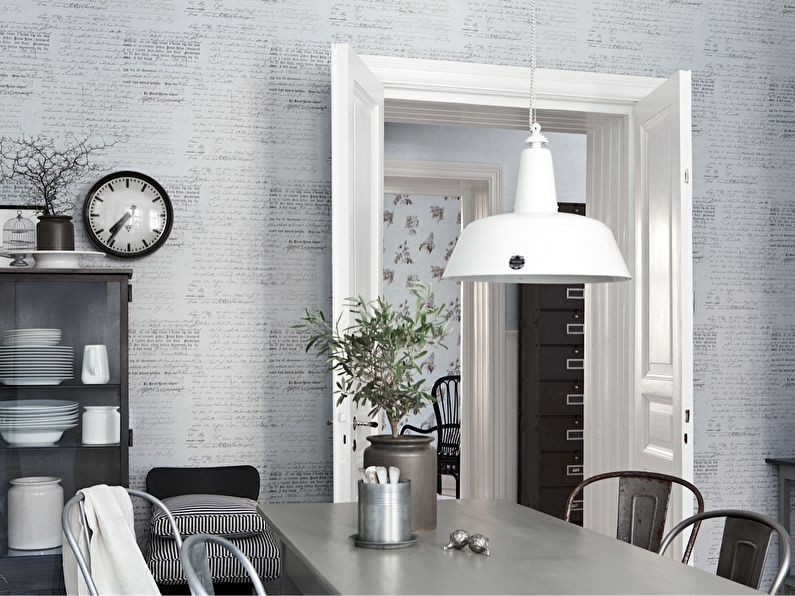

Grey wallpaper for the kitchen
Shades of steel, stones, silver, chrome metal, and mirrors – with such a rich spectrum, gray color can become a real find for a designer. A simple combination of textures of different saturation – and a laconic functional interior is obtained. If desired, it can always be diversified with bright details and additions.



Black wallpaper for the kitchen
Black wallpaper in the kitchen is a bold and eccentric solution. But pairing them with a white or steel set and applying the right lighting can create a very interesting interior without the effect of shrinking the space.
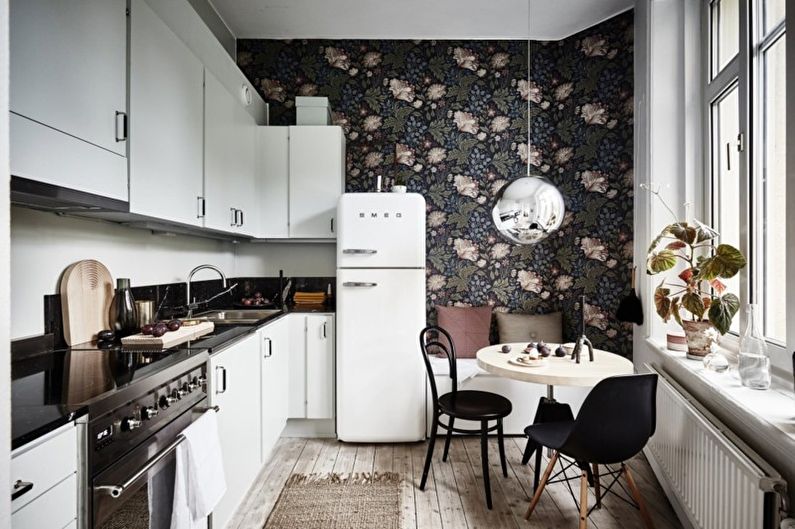

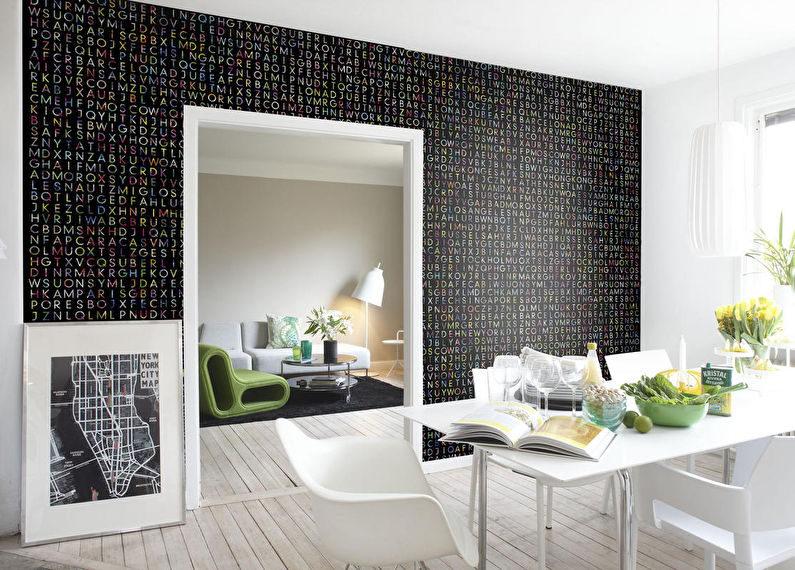
Brown wallpaper for the kitchen
Natural shades ranging from dark chestnut to beige, including the entire wooden palette, are an optimal choice for those who are not chasing fashion but prefer cozy classics.
Unlike cool achromatic colors, brown always brings some warmth. Solid-colored or patterned wallpapers in the form of a wooden or bamboo wall, with painted autumn leaves, coffee beans, simple lines, or in an English check – this color will always remind you of something calm, homey, and family-oriented.


Yellow wallpaper for the kitchen
You can adjust the brightness of yellow from a subtle sandy shade to a vibrant orange.
Yellow wallpaper pairs well with white, green, gray, black, and purple shades. Choose bright colors that match the level of saturation.

Green wallpaper for the kitchen
Walls with wallpaper in shades of emerald, lettuce, and mint will be the perfect frame for a wooden, orange, or gray kitchen set.
The green color is subconsciously perceived as the safest, as it symbolizes life itself and the flourishing abundance of warm seasons. It combines the warmth of sunshine and the coolness of a spring breeze, so shades of grass are perfect for both hot southern and cold northern rooms.


Wallpaper for a small kitchen
To make a small kitchen seem more spacious, it’s best to choose light, solid-colored wallpaper with small patterns and no contrasts. Gloss, pearl, and golden-silver reflections won’t hurt either.
Vertical lines can visually lift the ceiling, but it’s not necessary to buy striped wallpaper. It’s better to simply combine single-colored and patterned rolls of similar shades, placing them from the floor to the upper boundary of the wall.
To add missing volume, you can use panoramic or 3D wallpapers with beautiful distant views and a sunlight effect.


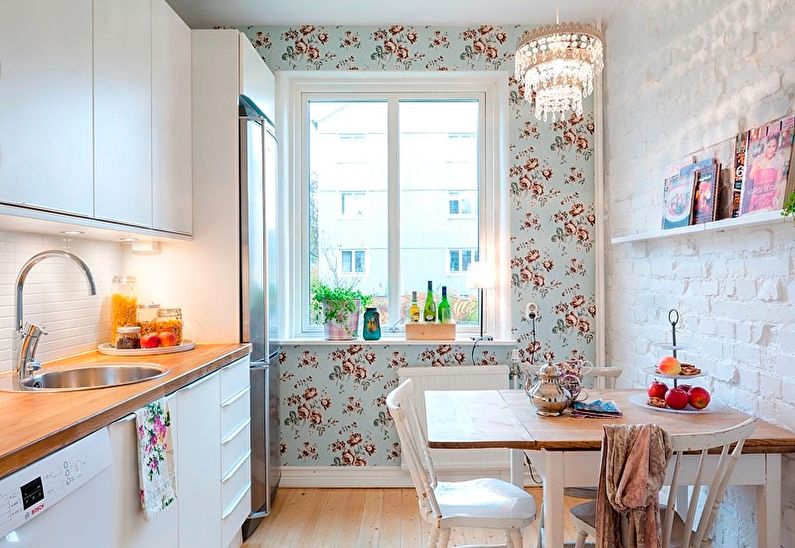

Wallpaper for the kitchen-living room
In studio apartments where the kitchen is combined with the living room, wall decoration can help beautifully zone the space.
Imitation of tiles, stone, brickwork will be appropriate in the cooking area, while more ornate wallpaper, such as silk-screen printing, unusual photopanoramas, or even exclusive hand-drawn designs, will adorn the guest area. It’s desirable to maintain general stylistic features and adhere to a unified color palette.


Wallpaper for the kitchen – photos
Photos of designer solutions quickly showcase various textures and colors.
In the pictures, you will see how solid glossy and matte wallpapers, various patterns and prints, photo wallpapers, as well as cork, bamboo, and other exotic coverings look in the kitchen interior.
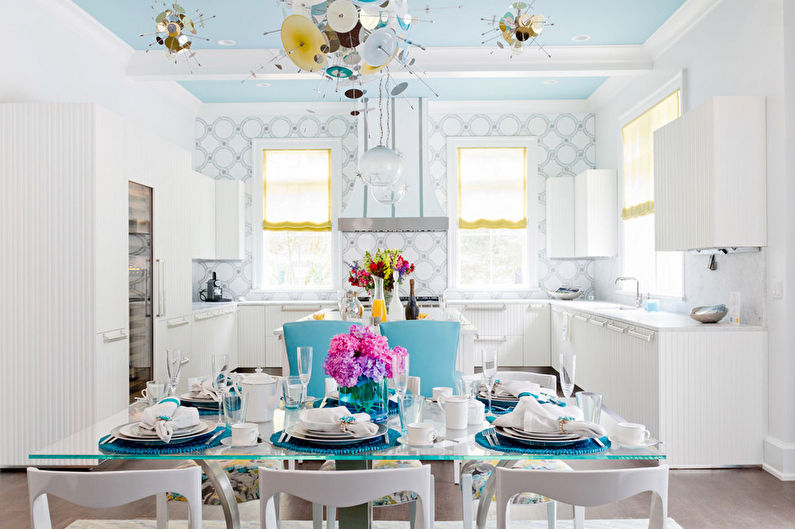





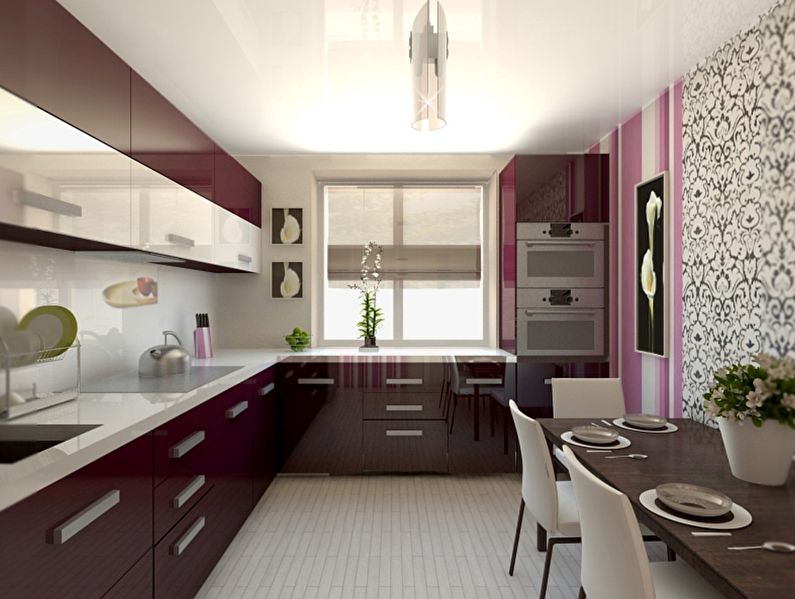




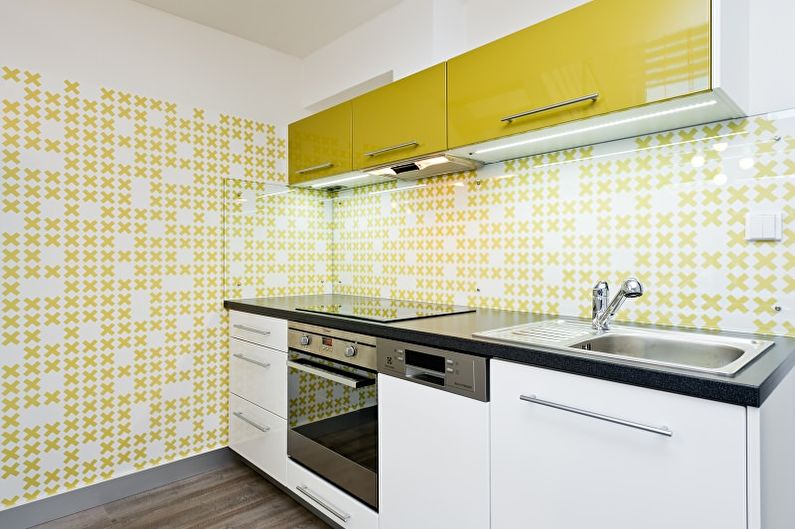







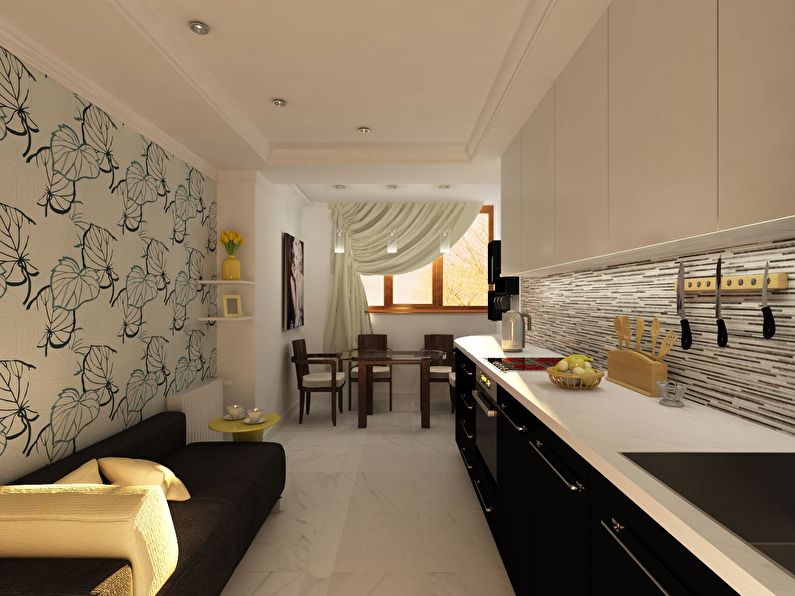






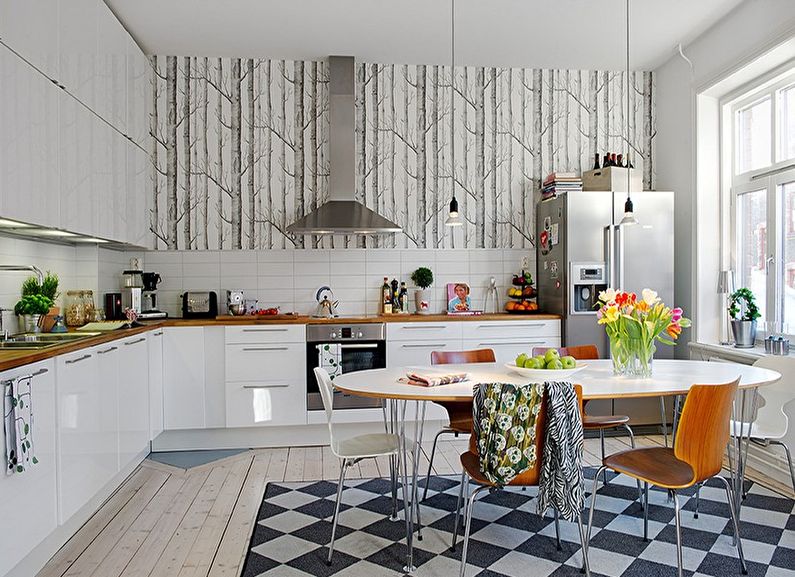





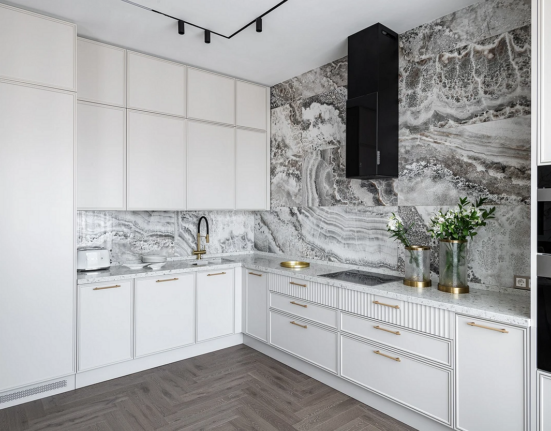

Leave feedback about this